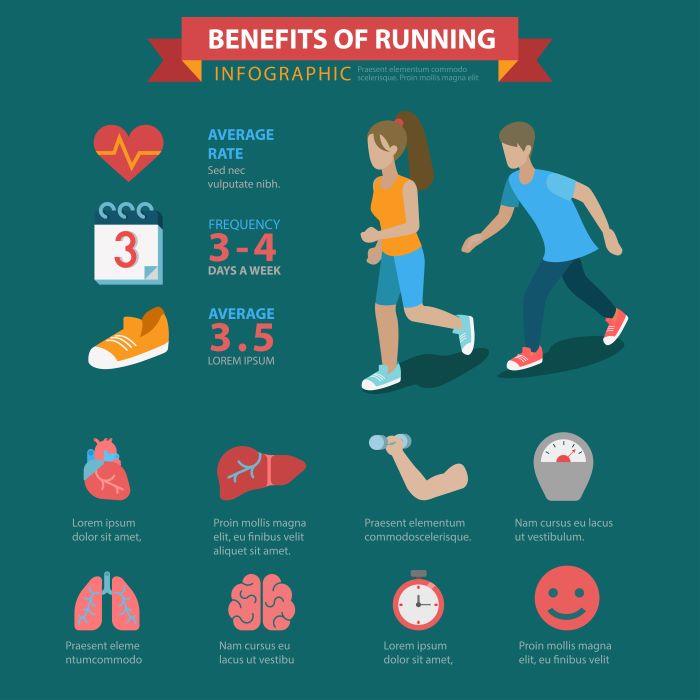For hockey players, the importance of running workouts cannot be overstated. These workouts not only enhance physical conditioning but also play a critical role in improving on-ice performance. Running workouts for hockey focus on building speed, endurance, and agility—key components for success during games.
Engaging in well-structured running workouts helps players develop the cardiovascular fitness required for prolonged skating. It increases their ability to recover quickly between shifts, allowing them to maintain a high level of performance throughout the game. Additionally, these workouts can aid in preventing injuries by strengthening muscles, tendons, and ligaments.
Here are some key benefits of incorporating running workouts into a hockey training regimen:
- Improved Speed: Sprints and interval training can boost explosive power, essential for quick skating starts.
- Enhanced Endurance: Longer distance runs help build stamina, enabling players to stay competitive late in the game.
- Agility and Lateral Movement: Specific running drills can mimic the quick changes in direction common in hockey, improving overall agility.
By committing to a well-rounded running program, hockey players can gain a significant edge on the ice. Visit our website to learn more and get started today! Click here.
Types of Running Workouts to Enhance Performance

When it comes to enhancing performance on the ice, a variety of running workouts can be strategically employed to target different aspects of fitness. Understanding the types of workouts available allows hockey players to tailor their training regimen for optimal results.
Here are some effective types of running workouts that hockey players should consider:
- Interval Training: This involves alternating between high-intensity sprints and lower-intensity recovery periods. For example, players can sprint for 30 seconds followed by a 1-minute jog. This method boosts anaerobic capacity and mimics the stop-and-go nature of hockey.
- Long-Distance Runs: Incorporating longer runs into the training schedule builds aerobic endurance, which is essential for sustained energy over the course of a game. These sessions should be done at a comfortable pace to develop stamina.
- Hill Sprints: Running uphill strengthens leg muscles and enhances explosive power. This workout not only increases leg strength but also improves overall cardiovascular fitness, benefiting performance when skating.
- Fartlek Training: A Swedish term meaning
Interval Training for Explosive Speed Development

Interval training is a powerful workout strategy that can significantly enhance explosive speed, essential for hockey players who need to make quick, powerful movements on the ice. This form of training alternates periods of intense effort with periods of rest or low-intensity activity, allowing athletes to push their limits while still providing enough recovery to maintain high performance levels.
To effectively implement interval training, players can follow these key steps:
- Determine Your Goal: Decide whether you want to focus on short bursts of speed or longer, sustained efforts. For hockey, short sprints of around 20-30 seconds are often most beneficial.
- Warm-Up: Always start with a proper warm-up to prepare your body for intense activity. This can include light jogging and dynamic stretches to increase blood flow and flexibility.
- Design Your Intervals: A common approach for hockey players is to sprint for 20 seconds at maximum effort, followed by 40 seconds of walking or light jogging. Repeat this cycle for 15-20 minutes.
- Cool Down: After completing your intervals, cool down with a light jog and static stretching to aid recovery and prevent injury.
By incorporating interval training into their routine, hockey players can develop the explosive speed necessary to outpace opponents and improve overall game performance.
Endurance Running Techniques for Hockey Players

Building endurance is crucial for hockey players, as it enhances stamina and allows them to maintain peak performance throughout the game. Unlike short bursts of speed, endurance running focuses on longer distances at a sustained pace, helping players develop the aerobic capacity necessary for rigorous competition.
Here are some effective techniques for incorporating endurance running into a hockey training regimen:
- Long Runs: Schedule weekly long runs at a comfortable, conversational pace. Aim for distances ranging from 5 to 10 kilometers, gradually increasing as your fitness improves. This not only builds aerobic capacity but also strengthens muscles and improves mental toughness.
- Fartlek Training: This technique, which means ‘speed play’ in Swedish, combines continuous running with intervals of faster speeds. For example, during a 30-minute run, alternate between 1-2 minutes of sprinting and 5 minutes of jogging. This method mimics the variable pace of a hockey game.
- Hill Training: Incorporate hill sprints or runs into your endurance workouts. Running uphill builds strength and power in your legs, which is essential for explosive movements on the ice. Additionally, the downhill portion can improve your speed and coordination.
- Cross-Training: Engage in other endurance-enhancing activities like cycling, swimming, or rowing. These exercises can help reduce the risk of injury while still providing a solid aerobic workout.
Integrating these endurance running techniques into training can significantly boost a hockey player’s overall fitness, allowing them to skate longer and harder while maintaining the agility needed in the rink.
Incorporating Strength Training into Running Routines
To maximize performance on the ice, hockey players must not only focus on running workouts but also incorporate a structured strength training program into their routines. Strength training enhances muscle power, improves endurance, and reduces the risk of injury, making it a vital component of any athlete’s training regimen.
Here are some effective strategies for integrating strength training with running routines:
- Full-Body Workouts: Focus on exercises that target multiple muscle groups simultaneously. Movements like squats, deadlifts, and bench presses not only build strength but also improve coordination and stability, which are essential for hockey performance.
- Functional Movements: Incorporate functional exercises that mimic the movements performed on the ice. For example, lateral lunges and rotational medicine ball throws can enhance strength while improving agility and balance.
- Bodyweight Exercises: Utilize bodyweight training for flexibility and strength development without the need for equipment. Push-ups, pull-ups, and planks are excellent choices that can be performed anywhere, making them easy to incorporate into a running routine.
- Periodization: Structure your training plan by alternating between strength and running workouts to give your muscles adequate recovery time. For instance, you could focus on strength training three days a week and running three days a week, allowing for optimal performance and growth.
By combining strength training with running workouts, hockey players can enhance their overall athleticism, leading to improved speed, power, and endurance on the ice. This holistic approach ensures that players are well-rounded athletes, ready to face the challenges of the game.
Tips for Creating a Personalized Running Workout Plan

Creating a personalized running workout plan is essential for any hockey player aiming to enhance their performance. A tailored approach not only addresses individual fitness levels and goals but also ensures that training remains engaging and effective. Here are some valuable tips to guide you in designing your own running workout plan:
- Assess Your Current Fitness Level: Before diving into a workout plan, evaluate your current running abilities and overall fitness. Understanding your strengths and areas for improvement will help you set realistic goals.
- Set Specific Goals: Define what you want to achieve with your running workouts. Whether it’s increasing speed, building endurance, or improving agility, having clear objectives will keep you motivated and focused.
- Incorporate Variety: To prevent boredom and plateauing, mix different types of running workouts into your plan, such as interval training, long-distance runs, and hill sprints. Variety not only keeps things interesting but also challenges your body in different ways.
- Schedule Recovery Time: Allow for adequate recovery in your plan. This includes rest days and lighter workout sessions to prevent burnout and reduce the risk of injury. Listen to your body and adjust your plan as needed.
- Track Your Progress: Regularly monitor your performance to see how you’re improving. Use apps or a running journal to log your workouts, noting distances, times, and how you felt during each run.
Remember, your running workout plan should evolve as you progress. Don’t hesitate to make adjustments based on your experiences and changing goals. Embrace the journey of creating a workout that feels right for you!
Visit our website to learn more and get started today! Click here.


